From cooking to warfare, the dynamic history of the lavender plant shows that it deserves more credit than just having a colour named after it. As you dive into the timeline of this multipurpose plant, you'll find that people throughout the ages have found it useful before even understanding its full potential. Read on to fly through lavender's history, and see how different societies have found it useful.
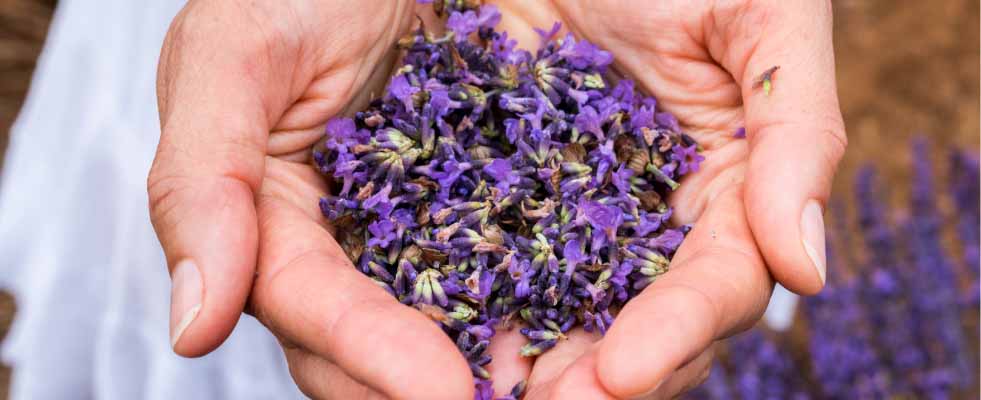
Lavender: A Proper Introduction
Lavender, also known by its scientific name Lavandula angustifolia, is a colourful flowering plant—part of the mint family (7). Lavender's close relatives are many of the culinary herbs, like rosemary, basil, oregano, thyme and sage. It grows to about 3 feet high and has silvery green leaves. Lavender has a light purple flower, of which the colour lavender is named after.
Lavender is native to the Mediterranean, the Middle East, North Africa, Cape Verde and the Canary Islands. It can be found in Asia, Russia, Australia and the Americas where the climate is suitable. Lavender grows best in moderate climates with sunny, temperate summers and dry, mild winters.
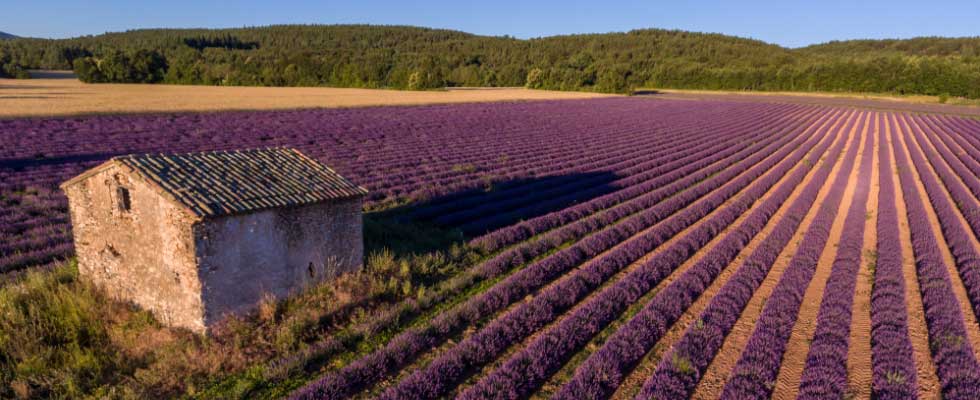
Lavender is hardy and can grow in dry conditions. Even though lavender thrives in sunny weather, it is sensitive to high humidity. It does well in dry, rocky soil. The climate around the Mediterranean is ideal for lavender, and most of the world's highest quality lavender is harvested there.
Lavender: A History
The first record of lavender can be traced back to more than 2,500 years ago! The ancient Egyptians used lavender in the mummification process, as well as for its fragrant scent in perfumes. Traces of lavender were even found in the tomb of the Egyptian pharaoh, Tutankhamun. The ancient Romans also used lavender for its soothing fragrance in washing and bathing. In both of these cases, we can laud lavender's longtime use and longevity (10).

When the technique of steam distillation was developed, Hildegarde von Bingen, Matthiolus and Paracelsus described using essential oil of lavender as a sedative against headaches and toothaches (Kroeber 1935, Madaus 1938). These weren't the only things lavender was used to calm… lavender oil was traditionally diffused to calm excited children! This calming effect of lavender water was described as early as 1608 by Rembertus Dodonaeus.
High concentrations of lavender even led to what was described as narcotic effects (Guillemain et al. 1989). Lavandula officinalis flowers and essential oils have been used for sedative effects throughout Europe (Weiss & Fintelmann 1999). An example of this phytotherapeutic use of lavender flowers was mentioned by Leclerc in France (1966).
Lavender oil has been marketed and used for a bath additive since 1976. In 2009, Germany began to authorise lavender oil soft capsules as an official product in the market. This was preceded by the tradition of administering drops of lavender on a piece of sugar (ESCOP 2009; British Herbal Pharmacopoeia 1983, referring to the British Pharmaceutical Codex BPC 1973).
The Lavender Name Game
Lavender's name comes from the Latin word for washing, lavare. In ancient times, like with the Romans, people weren't aware of the chemical constituents of lavender. Even so, they used it to wash and perfume clothes, especially in Mediterranean climates where the plant was widely available. It was sometimes used in garment drawers for a base fragrance for perfume. With less bathing came more perfume, and more lavender! Rumour has it that Cleopatra even enlisted the help of lavender to seduce Mark Antony.
Lavender Literature
The oldest book in the world, The Gutenberg Bible, makes reference to lavender in several passages for scenting the body (10). In the New Testament book of John, Mary anoints Jesus with lavender—referred to as spikenard—which Jesus asked them to reserve for his body after his death.

There are even historical anecdotes that in the 16th century, during the height of the Black Plague, lavender and alcohol were used to treat medical gloves. These same anecdotes suggest that use of those gloves significantly reduced the wearer's chances of contracting the disease. Other anecdotes during the same time said that lavender harvesters and field workers were less likely to become infected.
Plague doctors would also stuff their beaked masks with lavender and other aromatic herbs, hoping the smell would ward off the disease. Just like people would use fragrances to take the place of bathing, they thought smell could ward off disease. We've come a long way in our medical understanding since then!
European doctors in the Mediterranean region also used lavender for medicinal purposes. They even used it to clean and heal wounds and burns. The ancient Greeks used lavender to reduce body aches and to improve sleep.
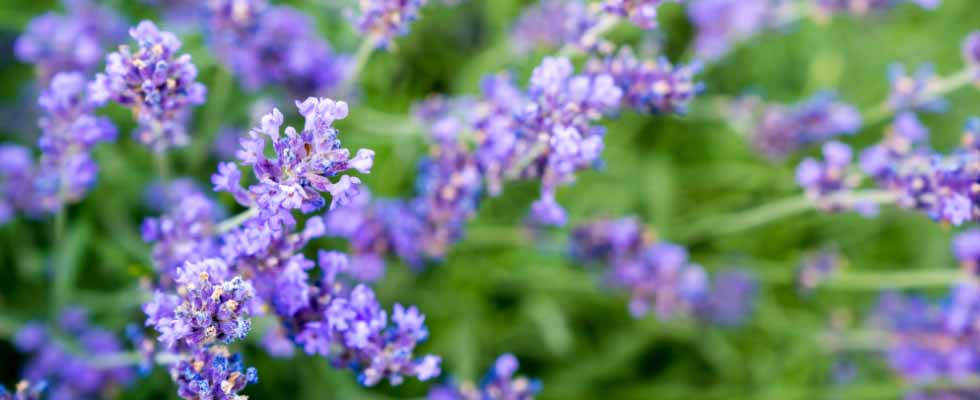
Lavender vs. Lavandin
Not all lavender is the same: it is important to note the difference between lavender and lavandin. Lavender, also known as English lavender, comes from the Lavandula angustifolia plant. Lavandin comes from a related lavender species; however, lavandin plants have greyish-tinged flowers that produce more oil than English lavender. In addition, the oil extracted from lavandin, which contains a lavender-like aroma, doesn't quite have the same smell as English lavender. Lavandin oil also has a vastly different chemical make-up and doesn't have the same medicinal qualities as English lavender. The world's entire annual production of English lavender is only about 200 metric tons. In contrast, the annual worldwide production of lavandin is 1,000 metric tons—almost five times as much!
Lavandin
Like all hybrids, lavandin is sterile. It is reproduced with cuttings. This means that the plants are identical, and cuttings can in turn be taken from them, constituting a “clone” plant group as opposed to the “population” of fine lavender.
Lavandin is mostly grown in Bulgaria, Spain, France, Italy, the Balkans, Australia and Tasmania. Bulgaria is the world's leading producer of lavandin. Lavandin grows better in acidic soil, while English lavender grows better in basic/alkaline soil. A lot of lavender is harvested on large commercial farms, and lavender farmers use machines to harvest. First, the stems are cut, and then the flowers are channelled into a wagon that takes them to the processing plant. Machine methods are more stressful on lavender plants than hand harvesting. However, one mechanised harvester can do the work of more than 100 human harvesters.
Growing and Harvesting Lavender Oil
Lavender blooms in the middle of the summer, which is when they are best for harvest. The flowers of the English lavender plant are used to extract the best oil. Their leaves are used to extract lower quality oil. The flowers of English lavender produce the high quality lavender essential oil that is used for medicinal use and fine perfumes. Much of the English lavender production of France, where most English lavender is grown, goes towards the perfume and cosmetics industry.
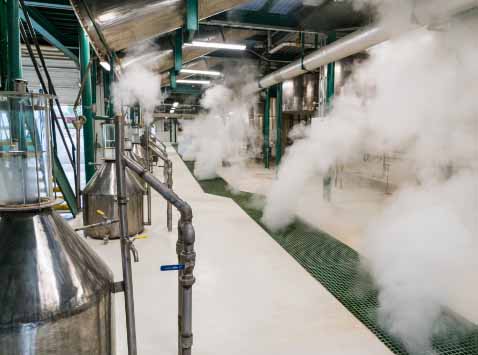
Once the lavender flowers are harvested, they are packed into a large stainless steel vat. The vat is heated so that the lavender oil is gradually separated from the flowers into the steam that is created. The hot steam mixture is then cooled to release the oil.The oil is separated from the condensed water in a special container, which then takes several months for the oil to cure. Some lavender processors try to speed up this time frame by putting the steam mixture under pressure. While this takes substantially less time, it affects the quality of the yield of essential oil. The highest quality lavender oil uses the lowest temperature possible with no added pressure to the vat.
Lavender in Cooking and Baking
Lavender isn't only good for smelling, but can also add its aroma to food. Lavender's dried flowers and buds can be used in cooking to intensify sweet and savoury dishes. The lavender leaves and stems are also used and have a subtler taste than the flowers. They are often paired with rosemary to season lamb, chicken, grilled meats, sauces and stews. These give them a more fragrant taste. Lavender and rosemary are also used to season vegetables, potatoes and rice dishes.

When using lavender in cooking, it is important to use culinary lavender and not ornamental lavender. Culinary lavender is English lavender, not lavandin. Cut the stems off the plant just after the buds have opened and lay them flat to dry. After washing the buds, dry roast them in a warm oven or grind them in a coffee grinder before using them. Lavender flowers can be placed in sugar or syrup to infuse it with the aromatic lavender fragrance. Then the lavender-infused syrup or sugar can be used to make confections, sweets, baked bread and other baked goods. Some people love lavender-flavoured whipped cream or ice cream.
Lavender in Tea and Beverages
Lavender tea is made from the flowers of the English lavender, not lavandin. It is an herbal tea that has distinct flavour and subtle hints of mint, rose or apple, depending on the kind of lavender. Sometimes lavender flowers are blended with other teas to intensify the flavour. Lavender leaves are occasionally used to make a less intense tea.
Lavender's Medicinal Qualities
As noted earlier, the ancient Greek, Roman and Egyptian civilisations used lavender for medicines and fragrances. By the Middle Ages, lavender was commonly used for its perceived antiseptic, calming, anti-inflammatory and antioxidative traits. Without any scientific studies to support centuries of use, this plant became of interest to researchers. Although there is insufficient evidence from clinical trials, the effectiveness of herbal medicines such as those containing lavender oil is plausible. According to the HMPC (European Committee on Herbal Medicinal Products), there is evidence that these supplements have been used safely for at least 30 years. And according to the European Medicine Agency, intended uses don't require medical supervision (21, 22, 23). Let's look at some of history's recent studies involving lavender.
1. Antiseptic: Historical Use of Lavender for Healing Wounds and Burns
Lavender oil was used for centuries to clean wounds and promote healing. Greek and Roman armies used lavender to clean and dress their wounds. Some military hospitals and doctors even experimented with lavender during World War I to treat wounded soldiers. In 2016, one study implied that lavender oil promotes the healing of wounds through the increased formation of healing tissue (1).

Gattefossé's Burn
In the not-so-distant past of July 1910, French scholar and chemist René Maurice Gattefossé had a horrible laboratory explosion that covered him in burning substances. After rolling in the grass to extinguish the flames, his hands were covered in a quickly developing gangrene. According to Gattefossé, after just one rinse with lavender essential oil, the gasification of the tissue stopped, and healing began the next day. If his report is true, lavender oil may have played a part in his impressive recovery.
2. Anxiety Reduction: Does Lavender Help With Anxiety?
Five studies in the last nine years have had outcomes indicating lavender oil's possible ability to reduce certain anxiety symptoms. The first was in 2010, and was a randomised, double-blind, placebo-controlled study of 221 adults suffering from anxiety disorders. After ingesting orally administered lavender oil called Silexan, symptoms of their anxiety were reduced. The second study was almost identical. A random, placebo-controlled group of 170 adults were also given Silexan, which resulted in reduced anxiety-related restlessness (2015).
Three more randomised, double-blind, placebo controlled studies had similar results in 2014 and 2015, where orally administered lavender oil helped with depressive and anxiety symptoms. These studies are now a part of a growing body of scientific support that lavender oil could be a tool to fight anxiety and stress.
Lavender oil and flowers have been used for more than 30 years in the EU. A well-established use cannot be proposed for lavender flowers or oil in the treatment of general anxiety disorders. Although the quality of the studies has increased with time, the number of patients treated with essential oil of lavender in RCTs (return to clinic) is too low (3, 4, 5).

3. Lavender for Relaxation
Your morning commute to work can be an additional stressor on an already busy day. Who doesn't want to relax from the worries of life? Lavender oil's calming ability has been used for centuries. A 2012 study provided strong support for the relaxation effect of inhaling the aroma of lavender oil (6).
4. Lavender to Sleep
Can't sleep? The ancient Greeks would use lavender to fight insomnia. A 2015 study of 158 postnatal mothers found that the lavender fragrance helped improve their quality of sleep significantly. Another study of Japanese students found that exposure to the aroma of lavender oil during the night improved the student's ability to wake up the next morning. The EU established a long-standing use and tradition of lavender flowers, where they mention the possible effect for the relief of mild symptoms of mental stress, exhaustion and to aid sleep (8).

5. Lavender Oil for Muscle Pain
The story of lavender oil's possible ability to reduce skin and muscle pain has been known for ages. The Ancient Greeks rubbed lavender oil on sore muscles to reduce muscle pain and discomfort. Certainly when combined with a massage, one can feel the desired effect (10).
6. Increasing Antioxidants with Lavender
When you hear 'antioxidants,' you might think of health food. But what are antioxidants? Oxidising agents are potentially damaging substances in the body. Antioxidants remove these, thus helping maintain the body's health. They were first were studied during the 1920's-1950's. Later, a 2013 medical study found that lavender oil increased the incidence of glutathione, catalase and SOD: three of a human's most powerful antioxidants (10).
Another clinical study with 22 volunteers was conducted with lavender and rosemary essential oil. After sniffing lavender for 5 minutes, each subject's saliva was immediately collected. Various physiologically active substances in the saliva were found, such as the stress hormone cortisol. Both the rosemary and lavender stimulations decreased cortisol levels. A decrease in cortisol protects the body from oxidative stress, leading researchers to believe lavender has a positive effect in that regard (Atsumi & Tonosaki 2007).
7. Lavender for Headaches and Migraines
One of mankind's oldest ailments is the migraine. These intense headaches were even recorded in 1200 B.C by the Ancient Egyptians. Around 400 B.C., the well known physician, Hippocrates alluded to the visual interferences that sometimes antecede a migraine. Some people will use lavender to ease any tension.

Lavender Veterinary Use
In some countries, lavender has been used in veterinary medicinal products for topical use. Together with other plant extracts and essential oils, it has been used for antiseptic and healing purposes (22).
Lavender Oil for Menstrual Cramps
Menstrual pain has ailed women since the dawn of time. In a 2014 study, three drops of lavender oil were applied to the hands of 96 women suffering from menstrual cramps. An hour after menstrual pain, they held their hands to their noses and inhaled the aroma for five minutes. The study found that the lavender significantly relieved their menstrual pain when compared to the placebo group. The women that didn't smell the lavender oil were 12 times more likely to feel tired and nauseous and 16 times more likely to faint.
Young Living's Uses for Lavender
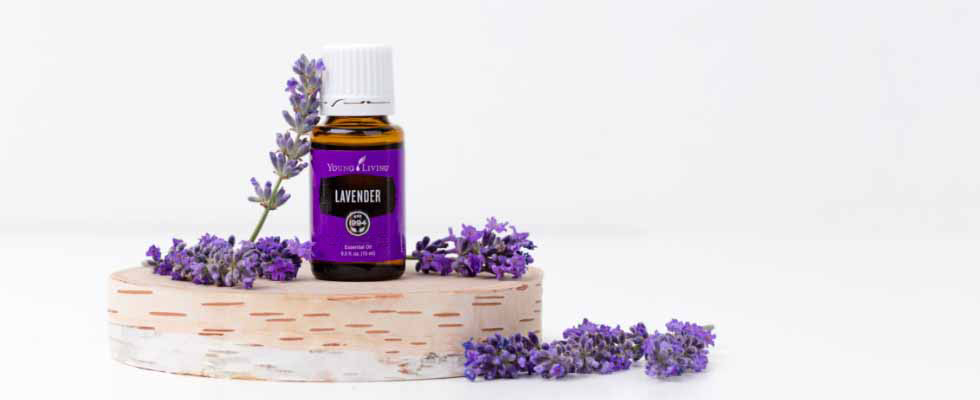
As one of Young Living's most popular products, lavender is a great beginner oil and a must-have for every home. Labelled for cosmetic and aromatic use, Young Living Lavender essential oil produces a feeling of well-being on skin and hair. Young Living Lavender essential oil is not registered or labelled as a medicine. It isn't just a favourite because of its classic scent—it's also highly versatile. From skin care products to relaxing routines, this oil can infuse and enhance many areas of your life.
Shop Lavender Oil- https://www.ncbi.nlm.nih.gov/pmc/articles/PMC4880962/
- https://www.ncbi.nlm.nih.gov/pubmed/26293583
- https://www.ncbi.nlm.nih.gov/pubmed/20512042
- https://www.ncbi.nlm.nih.gov/pubmed/24456909
- https://www.ncbi.nlm.nih.gov/pubmed/26718792
- https://www.ncbi.nlm.nih.gov/pubmed/26718792
- https://www.ncbi.nlm.nih.gov/pubmed/22612017
- https://www.ncbi.nlm.nih.gov/pmc/articles/PMC4443384/
- https://www.ncbi.nlm.nih.gov/pubmed/22582680
- https://www.ncbi.nlm.nih.gov/pubmed/26051566
- https://www.ncbi.nlm.nih.gov/pubmed/23351960
- https://jmm.microbiologyresearch.org/content/journal/jmm/10.1099/jmm.0.027748-0
- https://www.ncbi.nlm.nih.gov/pubmed/22517298
- https://lipidworld.biomedcentral.com/articles/10.1186/1476-511X-12-189
- https://www.ncbi.nlm.nih.gov/pmc/articles/PMC3612440/
- https://www.healthline.com/nutrition/antioxidants-explained
- https://www.medicalnewstoday.com/articles/317484.php
- https://www.medicalnewstoday.com/articles/317484.php
- https://www.ema.europa.eu/en/medicines/herbal/lavandulae-aetheroleum
- https://www.ema.europa.eu/en/documents/mrl-report/lavandulae-aetheroleum-summary-report-committee-veterinary-medicinal-products_en.pdf
- https://www.ema.europa.eu/en/documents/herbal-report/final-assessment-report-lavandula-angustifolia-miller-aetheroleum-lavandula-angustifolia-miller-flos_en.pdf
- http://ec.europa.eu/growth/tools-databases/cosing/index.cfm?fuseaction=search.details_v2&id=34989

.png)
.png)
